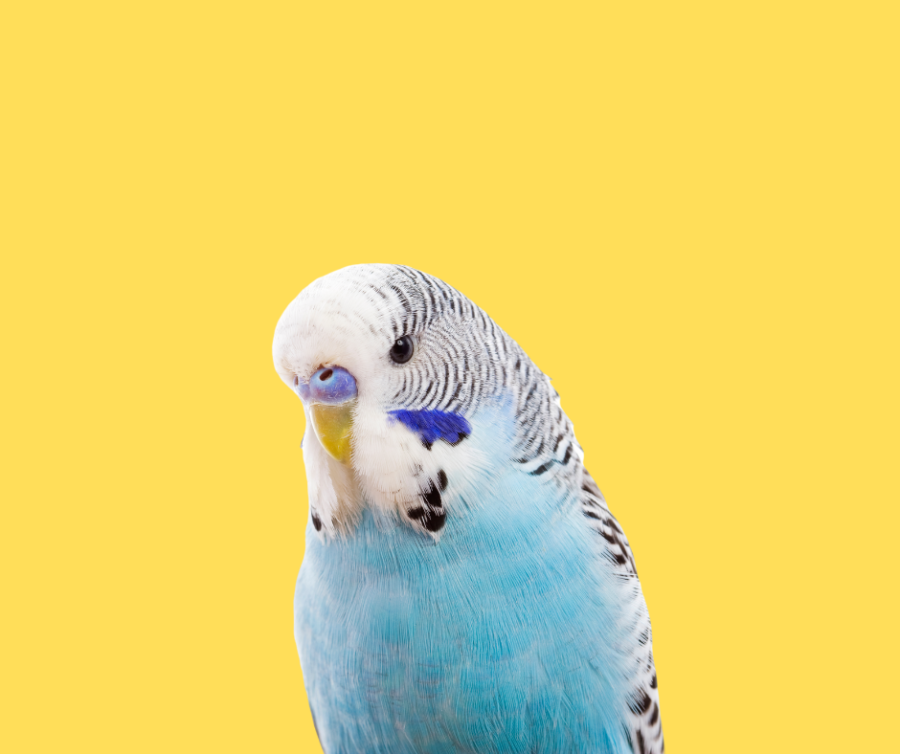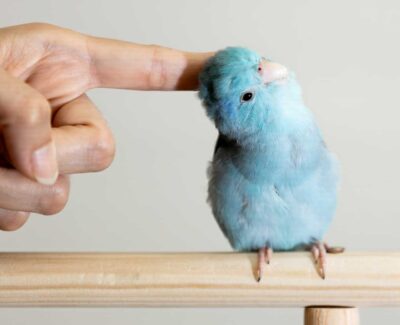
All About Budgies
As one of the most popular types of pet birds, budgerigars—commonly known as budgies—are much-loved for their vibrant coloring and sociable, playful nature. Although they are native to Australia, these small parakeets belonging to the parrot family have been bred in captivity for the pet trade since the 1850s and now live with human companions all around the world. Read on to learn more about budgies, or check out this informative video from our friends at AviBirds!
Key Facts About Budgies
With an average weight of only 1.2 ounces, budgies are small but lively birds. While they don’t sing, they produce a range of vocalizations, including a musical gargling and a distinctive high-pitched chirp, and can even learn to mimic human sounds. Wild budgies are green and yellow, while their captive counterparts are bred in various colors, including blue, white, and gray. They have scalloped markings on their upper parts, small hooked beaks, and small eyes with dark irises.
In their native habitat—Australia’s open scrublands, grasslands, and woodlands—budgies live in nomadic flocks of up to 2,000. In captivity, they have an average lifespan of 7-15 years, and enjoy a diet of fruits, berries, vegetables, and seeds.
Owning a Budgie
These friendly birds (particularly males) love the company of their human companions. They crave attention and care, and will reward you for providing it by perching on your shoulder or fingers. Since keeping budgies fully flighted is not usually recommended as they could potentially escape or hurt themselves, you’ll probably want to keep their wings trimmed by someone knowledgeable about the process. This will also make training and handling much easier.
When you bring home your new budgie, expect that it will require a couple weeks of tranquility to adjust to the new environment. During this time, be careful to approach the cage slowly and avoid touching it or making any loud noises. Provide fresh food and water every day in order to begin building trust with your budgie. Once this initial relationship has been established and your budgie starts to feel more comfortable, you can begin training it, inviting physical contact, and teaching it songs and sounds that you want it to mimic.
By caring for your budgie properly and providing it with a comfortable home, it will provide you with years of affection and entertainment in return. To learn more about budgies, visit our fact sheet.





